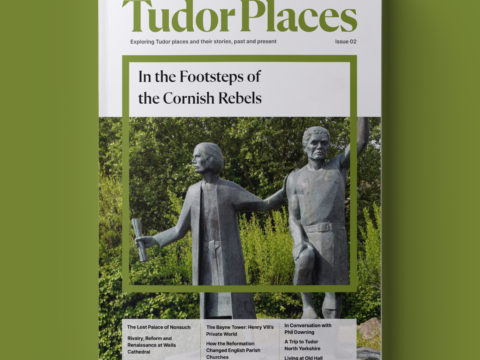Elizabeth I: Life Story
Chapter 16 : The Puritan Problem
Religious dissension was not solely the problem of the Netherlands. At home, there was increasing dissatisfaction with the state of the Anglican Church, from those who thought not only that the 1559 religious settlement hadn’t gone far enough, but who wanted to see a far greater intrusion of the Church into public life. Far from accepting that the queen, as Supreme Governor, should order the Church as she saw fit, with bishops to supervise the people, these Puritans (as they were disparagingly termed) thought that control over the Church and the people should be at the level of the parish minister. Even Elizabeth should be subject to haranguing from the pulpit if she were to sin.
Unsurprisingly, given Elizabeth’s views on monarchical power, she thoroughly disliked the Puritans and all their works, seeing their pretensions as deeply subversive, and calling them ‘[a] sect of perilous consequence, such as would have no kings but a presbytery…’ It has been suggested that her refusal to engage with the Puritans ultimately led to the civil wars of the following century.
A significant confrontation between the queen and the Puritans, was that later termed the ‘vestiarian controversy’. The 1559 settlement enjoined the use of distinct clerical dress, but Puritans objected to it as a hang-over from ‘popish’ superstition. Initially, with Elizabeth keen not to provoke religious controversy with either Catholics or Puritans, enforcement of the rules had been minimal. By 1565, however, she was unhappy with the lack of uniformity of religious observance across the kingdom and ordered Archbishop Parker to enforce the rules. As vestments were ‘things indifferent’, that is not related to the salvation of the soul, rules about them fell within the queen’s competence as Supreme Governor.
Parker accordingly drew up regulations, and tried to enforce them. There was widespread dissatisfaction amongst the Puritans, and eventually, eight were deprived of their positions for failure to observe the rules. Although he had not been the prime mover in the matter, because Elizabeth did not make her position public, Parker and the bishops were blamed by recalcitrant ministers who began murmuring against the whole idea of having bishops at all.
The parliaments of the early 1570s tried to bring in measures making the Prayer Book more Protestant, and applying the Act of Uniformity only against Catholics, but the queen would not brook such interference in her prerogative, and sent the Commons the message that no bill touching religion could be brought for debate, without prior approval from the bishops. Nevertheless, Puritanism and anti-episcopal feeling began to gain ground.
In December 1575, Edmund Grindal succeeded Parker as Archbishop of Canterbury. Grindal was at the radical end of Protestantism, having been an exile during Mary’s reign and his appointment was welcomed by the Puritans. Soon, however, he and Elizabeth had fallen out. Grindal was greatly in favour of ‘prophesyings’. These were meetings of serious-minded ministers who would meet to hear a sermon on some knotty point of the scriptures and then expound upon it. Elizabeth viewed such meetings with alarm – before long, she was sure, the ministers would leave aside the obscure biblical arguments and start discussing church discipline and structure.
Grindal was told to put a stop to the meetings. He refused, sending her a tactless and inflammatory letter in which he suggested she should accept admonition from the Church for, although she was ‘a mighty prince’, if she turned from God she might expect a ‘heaping up of wrath’ from the offended deity.
Elizabeth was outraged. She was Supreme Governor of the Church, and if Grindal would not stop the prophesyings, she would. She sent out circulars to all bishops banning them, and determined to deprive Grindal of the archbishopric. Burghley persuaded her that to try to do so might be outside her competence as Governor, so she contented herself with having Grindal confined to his palace at Lambeth, rendering him impotent as archbishop. He remained powerless until his death in 1583.
